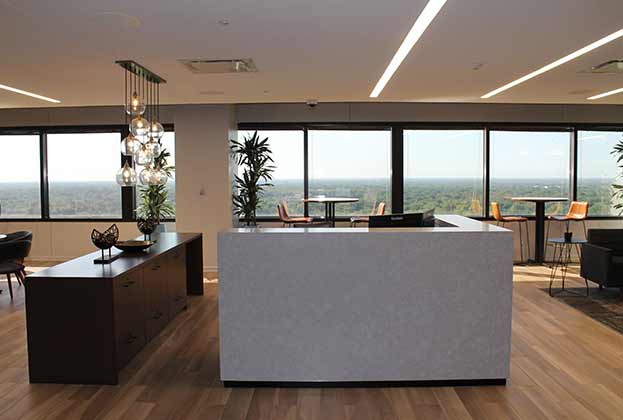Rising costs continue to dominate the narrative for global office occupiers, though declining incentives are helping avoid large-scale rent increases
2022, and especially the fourth quarter of the year, has been driven by the effects of rising costs. While rents haven’t seen large-scale increases, fit-out costs – driven by materials shortages, increasing labour costs, and construction pinch points – have increased by an average of 9.8% over the past year.
Rising costs across the board are beginning to be passed through to occupiers in the form of declining landlord contributions to fit-out costs – down nearly 20% in some markets – but more often in the form of declining incentives to occupiers.
Across the 30 markets covered in Savills Prime Office Costs (SPOC), incentives to occupiers have declined by 1% over the past year, though there is significant regional and even city-level variation. EMEA has seen the strongest declines in incentives, with an annual fall of 5% – these declines are largely being driven by major gateway cities such as Paris and London, with European tech hub Dublin also seeing declining incentives. Asia Pacific has seen minimal declines in incentives, with the regional average change hovering at -0.5% for the year.
EMEA has seen the strongest declines in incentives, with an annual fall of 5% – these declines are largely being driven by major gateway cities such as Paris and London
Kelcie Sellers, Associate, Savills Research
North America, particularly the United States, is the odd man out in terms of the global incentives picture. Driven by San Francisco, which has struggled to retain and attract occupiers in the face of large-scale hybrid working and market shifts within the tech industry, North America has seen an average increase in incentives over the past year of 2%. Most prime office landlords appear to be becoming more defensive in their positioning by aggressively chasing and maintaining occupancy levels through the offering of high concessions while not pushing up their asking rents.
As rising costs have been relatively obfuscated through declining incentives and landlord contributions, many markets globally have yet to see large-scale increases in rents with global gross rent (inclusive of property taxes and service charges) increases for prime offices averaging 3% for the year and 1% for the last six months. Net effective costs to occupiers – the cost inclusive of rent, fit-out, and any incentives – is up only 4% on the year which, when the headline rate of inflation and the increasing costs across the board from fit-out to energy to labour are all considered, does not appear quite as severe as many occupiers may have feared.
Methodology
The SPOC Index presents a quarterly snapshot of occupancy costs for prime office space throughout the world, as provided by our expert, local tenant representation professionals and researchers.
The adjusted annual all-in occupancy cost represents real-time transaction terms for 20,000 sq ft (2,000 sq m) of usable space based on a basket of top 5 most expensive properties to calculate ultra-prime average. The North American markets use a sample of very high rent threshold buildings (leasing occurring at the highest end of market).
All costs are reported in a standardised format of USD per sq ft of usable space per annum to account for variations in currency, reflect local payment protocols, and adjust for measurement practices across the globe. We have also factored in the credit value to the tenant generated from abated rent and the cost associated with fitting out the premises in order to provide an ’all-in‘ total occupancy cost in USD per usable square foot.
The fit-out costs were gathered from local Savills teams assuming the leasing scenario described above, plus the following: i) 30% cellularisation with the remainder of space open plan, ii) construction and cabling only (no furniture or professional fees).
Read the articles within Spotlight: Savills Prime Office Costs – Q4 2022 below.
.jpg)
